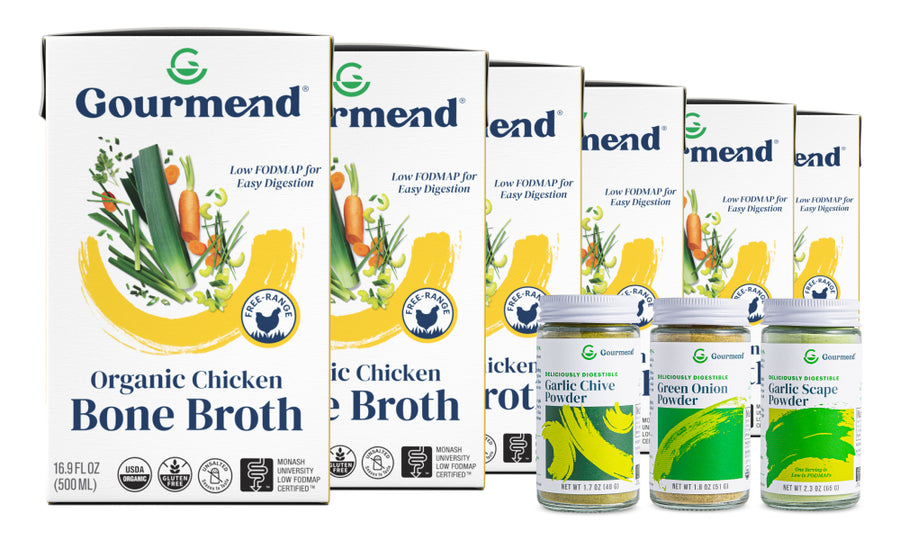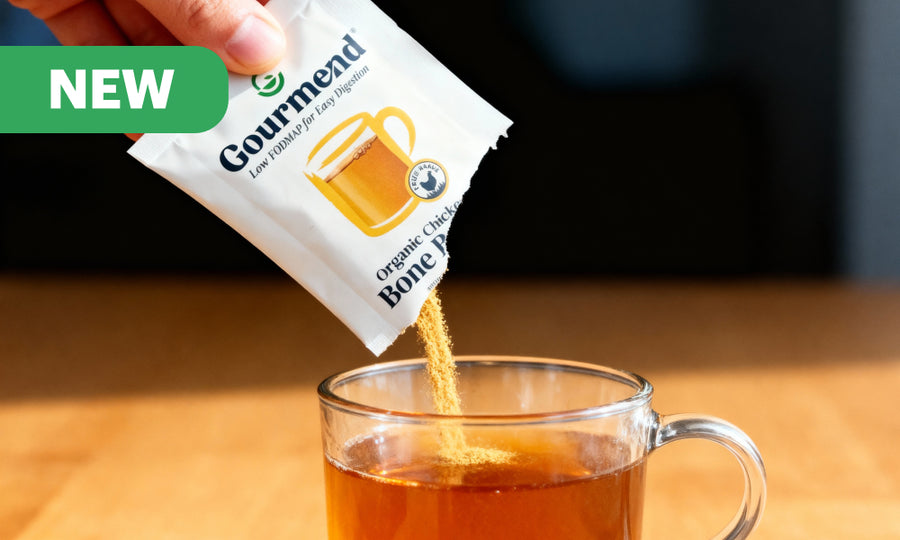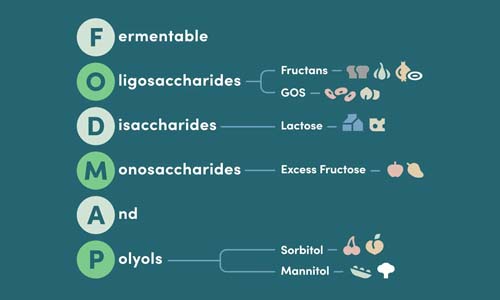Make Perfect Beef Broth: 3 Quick Techniques Revealed

The Art of Making Exceptional Beef Bone Broth at Home
There's something deeply satisfying about a pot of homemade beef bone broth simmering on the stove, filling your kitchen with rich, savory aromas. Beyond its incredible flavor, beef bone broth delivers impressive nutritional benefits that have made it a staple in both traditional cuisines and modern wellness routines. Whether you're looking to enhance your cooking or support your health, mastering homemade beef broth is a skill worth developing.
At its core, beef bone broth is a nutrient-rich liquid made by slowly simmering beef bones and connective tissues with aromatics. The extended cooking process extracts collagen, minerals, and amino acids from the bones, creating a flavorful foundation for countless dishes. While store-bought options exist, nothing compares to the depth, richness, and nutritional profile of broth you make yourself.
The Nutritional Powerhouse in Your Cup
Beef bone broth isn't just delicious—it's packed with nutrients that support overall wellness. A properly made bone broth contains:
- Collagen and gelatin that support joint, skin, and gut health
- Essential minerals including calcium, magnesium, and phosphorus
- Amino acids like glycine and proline that aid in tissue repair
- Compounds that may help reduce inflammation
- Gut-supporting properties that can aid digestion
The protein content in bone broth varies depending on preparation methods, but a cup typically contains 6-12 grams of protein, making it a nourishing option between meals. While bone broth calories are relatively low (typically 40-50 calories per cup), the nutritional density makes it incredibly satisfying.
Selecting the Best Beef Bones for Broth

The foundation of exceptional beef broth starts with choosing the right bones. For optimal nutrition and flavor, We recommend using a mix of different bone types:
Marrow Bones
These large bones (typically femur cuts) contain fatty marrow that enriches your broth with flavor and nutrients. The marrow contributes to the broth's caloric content and provides valuable fatty acids. When shopping, look for marrow bones cut into 2-3 inch segments to expose the nutrient-rich center.
Joint and Knuckle Bones
These collagen-rich bones are essential for creating that prized gelatinous texture when your bone broth cools. The collagen extracted from these bones transforms into gelatin during cooking, contributing significantly to bone broth protein content and supporting joint and gut health.
Meaty Bones
Bones with some meat attached (like short ribs, oxtail, or shank) add tremendous depth of flavor and additional protein to your broth. The meat will eventually fall off during cooking, infusing the liquid with rich, beefy notes.
Whenever possible, source bones from grass-fed, pasture-raised cattle. These bones typically contain higher levels of omega-3 fatty acids and fewer potential toxins than conventionally raised animals. Your local butcher, farmer's market, or specialty grocer are excellent places to find quality beef bones.
Essential Equipment for Bone Broth Success
Before diving into the bone broth making process, gather these kitchen tools:
- A large stock pot (at least 8-quart capacity) or slow cooker
- Roasting pan for browning bones
- Fine-mesh strainer for achieving clear broth
- Tongs for handling hot bones
- Storage containers (glass jars work beautifully)
While specialized equipment like pressure cookers can speed up the process, traditional stovetop simmering produces exceptional results and fills your home with wonderful aromas.
The Classic Bone Broth Method
Here's a tried-and-true approach to creating rich, gelatinous beef bone broth:
Step 1: Roast the Bones
Don't skip this crucial step! Roasting develops deep flavor through the Maillard reaction, transforming your broth from good to exceptional.
- Preheat your oven to 425°F.
- Arrange 3-4 pounds of mixed beef bones on a roasting pan.
- Roast for 30-40 minutes until deeply browned, turning halfway through.
For extra flavor, add roughly chopped carrots, leek tops, and celery to the roasting pan in the last 15 minutes.
Step 2: Transfer and Build Flavor Base
Now we'll create the foundation for extracting maximum nutrition from the bones:
- Transfer roasted bones and any pan juices to a large stockpot.
- Add aromatic vegetables: leek green tops, carrot, and celery.
- For extra umami depth, add a small piece of kombu seaweed or a few dried mushrooms.
- Add herbs like bay leaves, parsley stems, and black peppercorns.
- Cover completely with cold filtered water (about 12-14 cups).
Notice I've recommended leek green tops rather than onion bulbs. This provides beautiful flavor while making the broth more digestive-friendly for those with sensitivities. The green parts of scallions work wonderfully too.
Step 3: The Long Simmer
This is where patience becomes your greatest ingredient:
- Bring the pot to a gentle boil, then immediately reduce to the lowest possible simmer.
- Skim any foam or impurities that rise to the surface during the first hour.
- Maintain a bare simmer (just a few bubbles breaking the surface) for 12-24 hours.
- Check occasionally to ensure bones remain submerged, adding water if needed.
The extended cooking time is what distinguishes bone broth from regular broth, allowing for maximum extraction of collagen, minerals, and amino acids. This is where the magic happens for both flavor and bone broth nutrition.
For those concerned about leaving a pot simmering overnight, a slow cooker set to low provides a safe alternative. The gentle, consistent heat works perfectly for bone broth.
Understanding Bone Broth Nutrition Facts
What makes beef bone broth such a nutritional powerhouse? Let's break down the typical nutrition profile of a cup of homemade beef bone broth:
- Calories: Approximately 40-50 calories per cup
- Protein: 6-12 grams (varies based on bones used and cooking time)
- Fat: 0-5 grams (depends on how much fat is skimmed)
- Carbohydrates: 0-1 grams
- Minerals: Calcium, magnesium, phosphorus, potassium, and trace minerals
Beyond these macronutrients, the real nutritional value of beef broth comes from compounds not typically listed on nutrition labels: collagen, gelatin, glycine, proline, and glutamine—all of which support tissue repair, gut health, and overall wellness.
The protein in bone broth is particularly valuable because it comes in forms that are easy for your body to use. While the exact protein content in bone broth varies, the longer you simmer your broth and the more collagen-rich bones you include, the higher the protein content will be.
The Quick Method: When You Need Beef Broth Fast

While traditional bone broth requires patience, there are times when you need beef broth in a hurry. Here's a quicker method that still delivers excellent flavor:
- In a large pot, heat 2 tablespoons of olive oil over medium-high heat.
- Add 1 pound of beef stew meat cut into chunks and brown deeply on all sides.
- Add chopped leek tops, carrot, celery, and a handful of fresh herbs.
- Pour in 8 cups of water and bring to a simmer.
- Cook for just 45-60 minutes until flavorful.
- Strain and use immediately or refrigerate.
While this quick version won't have the same gelatin content or nutritional profile as long-simmered bone broth, it makes a flavorful cooking liquid when time is limited.
The Art of Simmering: Extracting Maximum Nutrition
The magic of beef bone broth happens during the long, slow simmer. This crucial stage is where bones release their collagen, minerals, and amino acids into the liquid, creating that rich, nourishing elixir we're after. Let's dive deeper into the simmering process and how to maximize the nutritional benefits of your broth.
The Science Behind the Simmer
When you simmer beef bones for extended periods, several important processes occur. The collagen in connective tissues breaks down into gelatin, which gives bone broth its characteristic body and mouthfeel. Meanwhile, minerals like calcium and magnesium leach from the bones into the broth, increasing its nutritional density. The longer and gentler the simmer, the more complete this extraction becomes.
For optimal results, maintain your broth at a bare simmer—just a few bubbles breaking the surface occasionally. A rolling boil can break down delicate compounds and create cloudiness, while too low a temperature won't extract efficiently. This gentle approach ensures maximum bone broth protein content while preserving flavor compounds.
Monitoring Your Broth
During the simmering process, check your broth periodically to:
- Skim any foam or impurities that rise to the surface (especially in the first hour)
- Ensure bones remain submerged, adding filtered water as needed
- Maintain that perfect barely-bubbling simmer temperature
We find out that a 16-24 hour simmer produces the most flavorful and nutritious beef bone broth. The extended cooking time allows for complete extraction of nutrients, resulting in a broth that's rich in protein, minerals, and collagen. When done properly, your broth should gel when refrigerated—a visual indicator of its high gelatin content.
Finishing and Storing Your Beef Bone Broth

Once your broth has simmered to perfection, it's time to strain, cool, and store it properly to preserve all that goodness.
Straining for Clarity
For crystal-clear broth with pure flavor:
- Remove large bones and vegetables using tongs or a slotted spoon
- Line a fine-mesh strainer with cheesecloth (optional but recommended)
- Strain broth through this setup into a clean container
- Avoid pressing on solids, which can cloud your broth
This careful straining process removes all particles while preserving the nutritional content of your beef broth. The result is a beautiful, clear liquid that's as visually appealing as it is nourishing.
Cooling Safely
Proper cooling is crucial for food safety and quality preservation:
- Divide hot broth into smaller containers to speed cooling
- Create an ice bath in your sink and place containers in it to rapidly lower temperature
- Once cooled to room temperature, refrigerate promptly
- Allow to chill completely before freezing (if that's your storage plan)
As your broth chills, a layer of fat will rise to the top and solidify. This natural "fat cap" actually helps preserve your broth by creating a seal that prevents oxidation. You can choose to remove it before using your broth or incorporate it for added richness and flavor.
Storage Options for Maximum Freshness
To preserve your bone broth's nutrition and flavor:
- Refrigerator: Store in glass containers for up to 5 days
- Freezer: Freeze in portion-sized containers for up to 6 months
- Ice cube trays: Freeze in cubes for adding to recipes (transfer to freezer bags once solid)
- Reduction: For long-term storage, reduce broth by half or more to create a concentrated base that can be reconstituted later
We particularly love freezing bone broth in silicone muffin tins, which create perfect 1/2-cup portions that thaw quickly when needed for cooking.
Nutrition Profile: What Makes Beef Bone Broth So Nourishing
The nutritional value of beef bone broth extends far beyond what you'll see on a typical nutrition label. Let's explore what makes this ancient food so beneficial for modern health needs.
Protein Content in Bone Broth
A common question we hear is "how much protein is in bone broth?" A cup of well-made beef bone broth typically contains 6-12 grams of protein, though this varies based on ingredients and simmering time. What makes bone broth protein special isn't just the quantity but the quality and type of proteins present.
The protein in bone broth comes primarily from collagen, which breaks down into gelatin during cooking. This type of protein contains high amounts of glycine, proline, and glutamine—amino acids that support tissue repair, gut health, and immune function. These amino acids are often lacking in the standard Western diet, making bone broth an excellent complement to other protein sources.
Mineral Content
The slow extraction process pulls minerals from beef bones into your broth, creating a bioavailable source of:
- Calcium and phosphorus (essential for bone health)
- Magnesium (supports muscle function and relaxation)
- Potassium (crucial for heart and muscle function)
- Trace minerals like zinc, iron, and manganese
For those looking to support bone health or increase mineral intake naturally, bone broth offers an easily absorbed source of these essential nutrients.
When to Reach for Store-Bought Alternatives

While homemade is ideal, there are times when quality store-bought bone broth makes sense. At Gourmend Foods, we've created organic beef bone broth that maintains the integrity and nutritional benefits of homemade, without the time investment.
Our bone broth is simmered with the green parts of leeks and scallions instead of onion bulbs, making it gentle on digestion while delivering rich flavor. We also include nori seaweed and oyster mushrooms for natural umami depth, rather than relying on additives or "natural flavors."
Look for these qualities when choosing packaged bone broth:
- Organic ingredients
- No artificial additives or preservatives
- Bones from pasture-raised animals
- Minimal ingredients you recognize
- Proper gelatin content (it should gel when refrigerated)
Quality store-bought options can be valuable for maintaining your bone broth habit when life gets busy, or when traveling makes homemade preparation impossible.
Troubleshooting Common Bone Broth Issues
Even experienced broth makers encounter challenges. Here are solutions to common problems:
Broth Doesn't Gel
If your broth stays liquid when refrigerated, you may need:
- More collagen-rich bones (joints, feet, knuckles)
- Longer simmering time
- Less water relative to bones
- More careful temperature control (too high heat breaks down gelatin)
Broth Tastes Bland
For more flavorful results:
- Roast bones more deeply before simmering
- Add more aromatics like leek tops and herbs
- Season properly with salt after cooking
- Consider reducing finished broth to concentrate flavors
Broth Is Cloudy
For clearer broth:
- Maintain a gentler simmer
- Skim more diligently in the early stages
- Strain through finer materials
- Avoid stirring during simmering
With these troubleshooting tips, you'll be able to perfect your bone broth technique and enjoy consistently excellent results.
Nutritional Benefits: What Sets Beef Bone Broth Apart
The nutrition in beef bone broth truly sets it apart from other broths and cooking liquids. While a standard beef broth might offer flavor, bone broth delivers a powerhouse of nutrients that support overall wellness. Let's explore what makes this ancient food so valuable in our modern diets.
If you enjoy hearty dishes, consider using your broth as a base for low-fodmap taco seasoning or try a comforting meal featuring our low-fodmap organic chicken broth for a gourmet touch at home.
The Protein Advantage of Bone Broth
One of the most significant benefits of beef bone broth is its unique protein profile. A cup of well-made bone broth typically contains 6-12 grams of protein, but it's the type of protein that matters most. Bone broth protein is primarily collagen-derived, providing amino acids that are often lacking in our regular diets.
These amino acids include:
- Glycine: Supports detoxification and helps form collagen
- Proline: Helps regenerate cartilage and heal joints
- Glutamine: Critical for gut health and immune function
- Arginine: Supports wound healing and hormone function
This amino acid profile makes bone broth particularly supportive for tissue repair, gut health, and immune function. For those wondering "does bone broth have protein?" – the answer is a resounding yes, and it's some of the most beneficial protein you can consume.
For a creative twist, use beef broth as the base for low-fodmap green onion powder recipes or as an ingredient in low-fodmap garlic chive powder infused dishes for added richness and nutrition.
Mineral Content and Bioavailability
The slow extraction process during simmering pulls minerals from beef bones into your broth, creating an easily absorbed source of:
- Calcium and phosphorus for bone strength
- Magnesium for muscle function and relaxation
- Potassium for heart health and fluid balance
- Iron for oxygen transport and energy production
- Zinc for immune support and wound healing
The beauty of these minerals in bone broth is their bioavailability – they're presented in forms that are easy for your body to absorb and utilize. This makes beef bone broth nutrition particularly valuable for those looking to support bone health or increase mineral intake naturally.
Calories and Macronutrients
For those tracking their intake, bone broth calories are relatively low compared to the nutritional benefits provided. A cup of beef bone broth typically contains:
- 40-50 calories (may vary based on fat content)
- 6-12g protein
- 0-5g fat (depending on whether you've skimmed it)
- 0-2g carbohydrates
This favorable bone broth nutrition profile makes it an excellent option for those looking to increase protein intake while managing calories – particularly valuable for athletes, those recovering from illness, or anyone following a calorie-conscious eating plan.
Incorporating Beef Bone Broth Into Your Daily Routine
Now that you understand the nutritional value of beef broth, let's explore practical ways to make it part of your daily life. The versatility of bone broth means it can easily become a staple in your kitchen and wellness routine.
Morning Ritual: Bone Broth Sipping
Starting your day with bone broth sipping can be a game-changer for energy and digestion. Simply heat a cup of broth and add:
- A pinch of sea salt
- Fresh herbs like chives or parsley
- A squeeze of lemon or lime juice
- A drizzle of good olive oil
This morning ritual provides sustained energy without the crash that comes from caffeine or sugar. The protein and minerals in your bone broth drink support steady energy levels throughout the morning, while the warm liquid gently awakens your digestive system.
Cooking Applications That Elevate Everyday Meals
Your homemade beef broth can transform ordinary dishes into extraordinary meals:
- Rice and grains: Replace water with broth when cooking for incredible flavor and added nutrition
- Mashed potatoes: Use warm broth instead of milk for dairy-free creaminess
- Pan sauces: Deglaze with broth after searing meats for restaurant-quality sauces
- Braising: Use as the cooking liquid for tender, flavorful meats and vegetables
- Soup base: Start any soup with your homemade broth for unmatched depth of flavor
The gelatin in bone broth adds body and mouthfeel to any dish it touches, creating that silky richness that elevates home cooking to new heights – all while boosting the nutritional value of your meals.
Bone Broth for Specific Health Goals
Many of our customers incorporate bone broth strategically to support particular wellness objectives:
- Post-workout recovery: The protein and minerals support muscle repair and hydration
- Intermittent fasting: A cup of bone broth provides nutrients without significantly breaking a fast
- Gut health support: The gelatin and glutamine may help support the gut lining
- Joint comfort: The collagen and glycosaminoglycans support joint tissue
- Skin health: The collagen and silicon may support skin elasticity and hydration
Whether you're looking to support specific health goals or simply enhance your overall nutrition, bone broth offers a versatile, delicious way to incorporate more nutrients into your daily routine.
When to Choose Quality Store-Bought Bone Broth
While homemade beef bone broth is ideal, there are times when quality store-bought options make sense. At Gourmend Foods, we've created a low-FODMAP organic beef bone broth that maintains the integrity and nutritional benefits of homemade, without the time investment.
Our bone broths are simmered with the green parts of leeks, scallions, and chives instead of onion bulbs, making them gentle on digestion while delivering rich flavor. We also include nori seaweed and oyster mushrooms for natural umami depth, rather than relying on additives or "natural flavors."
Consider store-bought bone broth when:
- You're traveling or away from your kitchen
- Life gets busy and you don't have time for the full preparation process
- You want consistent results without the variables of homemade preparation
- You need specific dietary requirements met (like certified low FODMAP options)
When selecting packaged bone broth, look for these quality indicators:
- Organic, grass-fed, or pasture-raised animal sources
- No artificial ingredients, preservatives, or "natural flavors"
- Minimal ingredients that you recognize
- Proper protein content (at least 5g per serving)
- Appropriate gelation when refrigerated
Frequently Asked Questions About Beef Bone Broth
After years of making, consuming, and talking about bone broth, here are the questions I hear most frequently:
How much bone broth should I drink daily?
Most people benefit from 8-16 ounces daily, but there's no hard rule. Listen to your body and adjust based on your needs and how you feel. Some people enjoy a daily cup, while others incorporate it several times weekly through cooking.
Can I make bone broth in a pressure cooker?
Yes! While traditional simmering extracts nutrients over many hours, pressure cookers can create excellent bone broth in 2-3 hours. The flavor profile may differ slightly, but the nutritional benefits remain substantial. Adjust cooking times based on your specific pressure cooker model.
Is the fat in bone broth healthy?
The fat in bone broth from grass-fed, pasture-raised animals contains beneficial fatty acids. However, whether to keep or remove it is a personal preference. The fat adds flavor and satiety, but skimming it creates a lighter broth that some prefer. Either way, the protein and mineral content remains intact.
How can I tell if my bone broth has gone bad?
Trust your senses. Spoiled broth will have an off smell, may develop mold, or taste sour. Properly stored, bone broth lasts 5-7 days in the refrigerator or up to 6 months in the freezer. When in doubt, follow the old kitchen wisdom: "When in doubt, throw it out."
Why is my bone broth cloudy?
Cloudiness usually results from rapid boiling (instead of gentle simmering), insufficient skimming during the early cooking stages, or fine particles that passed through straining. While clarity affects aesthetics, cloudy broth is still nutritious and delicious.
If you want to experiment with international flavors, try a batch of low-fodmap brisket with pomegranate rosemary pan sauce or enliven your meals with taco spice in your broth-based recipes.
For side dishes, use your broth to create crisp roasted baby potatoes or experiment with golden cumin fish and paprika-spiced wedges for a flavorful meal.
For protein-packed stews, try a low-fodmap beef and lentil stew or a comforting pan-roasted chicken in lemon sauce—both are perfect for making the most of your homemade or store-bought broth.
Conclusion: The Timeless Value of Beef Bone Broth
In our modern world of convenience foods and quick fixes, beef bone broth stands as a testament to traditional wisdom. This simple elixir – made from slowly simmering bones, vegetables, and herbs – delivers nutrition that supports our bodies in profound ways.
Whether you choose to make your own using the techniques we've explored or reach for a high-quality option like Gourmend Foods' organic beef bone broth, you're tapping into a culinary tradition that spans cultures and generations. The rich flavor and nutritional benefits of properly prepared bone broth simply cannot be matched by quick alternatives or flavor-enhanced products.
As you incorporate bone broth into your cooking and wellness routines, you'll likely notice benefits beyond just flavor – from improved digestion to greater energy and even better skin and joint comfort. These benefits aren't just anecdotal; they're backed by the unique nutritional profile that makes bone broth such a valuable addition to any diet.
Remember that bone broth isn't just another health trend – it's a return to the wisdom of slow food, whole ingredients, and traditional preparation methods. In our fast-paced world, taking the time to simmer bones slowly or choosing products made with the same care represents a commitment to both flavor and wellness that pays dividends in how you feel and how your food tastes.
So whether you're sipping it from a mug on a cold morning, using it as the foundation for your next culinary masterpiece, or incorporating it strategically for specific health goals, beef bone broth deserves its place of honor in your kitchen and wellness routine. Your taste buds – and your body – will thank you.
For more detailed guidance on preserving your own broth, visit this resource. To learn step-by-step how to make beef stock, see Simply Recipes' guide. For scientific insights into bone broth's health benefits, explore this research article.
Shop Organic Low FODMAP Beef Bone Broth
Frequently Asked Questions
Is beef broth and beef stock the same thing?
Beef broth and beef stock are similar but not exactly the same. Broth is made by simmering meat, often with some bones, along with vegetables and seasonings, resulting in a lighter, flavorful liquid. Stock is typically made by simmering bones for a longer time, extracting more collagen and gelatin, which gives it a richer, thicker texture. Both are delicious, but stock tends to be heartier and more gelatinous.
Is drinking beef broth good for you?
Drinking beef broth can be beneficial as it’s rich in nutrients like minerals and amino acids that support overall health and digestion. At Gourmend, our organic beef broth is made without additives, using grass-fed bones and gut-friendly ingredients like oyster mushrooms and nori seaweed, delivering depth of flavor and digestive comfort. While it’s not a cure-all, it’s a flavorful way to nourish your body and enjoy a warm, comforting drink.
How do you make beef broth?
Making beef broth involves simmering beef bones, meat, and aromatic vegetables in water for several hours to extract flavor and nutrients. At Gourmend, we use the green parts of scallions, chives, and leek tops instead of onions to keep it low FODMAP and gentle on digestion. Adding umami-rich ingredients like oyster mushrooms and nori seaweed enhances the depth without any artificial additives.
What is beef broth made of?
Beef broth is made from simmering beef bones, some meat, and a mix of vegetables and herbs to create a savory, nutrient-rich liquid. Gourmend Foods' broth swaps traditional onion and garlic bulbs for gut-friendly green scallions, chives, and leek tops, plus natural umami boosters like oyster mushrooms and nori seaweed. It’s organic, clean-label, and free from preservatives, giving you pure, whole-food flavor.
What happens if I use beef stock instead of beef broth?
Using beef stock instead of broth usually means you’ll get a richer, thicker base for your recipes because stock contains more gelatin from the bones. Stock can add more body and mouthfeel to soups and sauces, while broth tends to be lighter and more delicate in flavor. Both work well, but choosing stock or broth depends on the texture and strength of flavor you want in your dish.
Which is better for gravy, beef stock or beef broth?
Beef stock is generally better for gravy because its higher gelatin content creates a naturally thicker, silkier texture. The rich body from the collagen in stock helps the gravy cling well and feel luxurious. That said, a high-quality beef broth like from Gourmend Foods can also make flavorful gravy, especially if you’re aiming for something lighter but still deeply savory.





